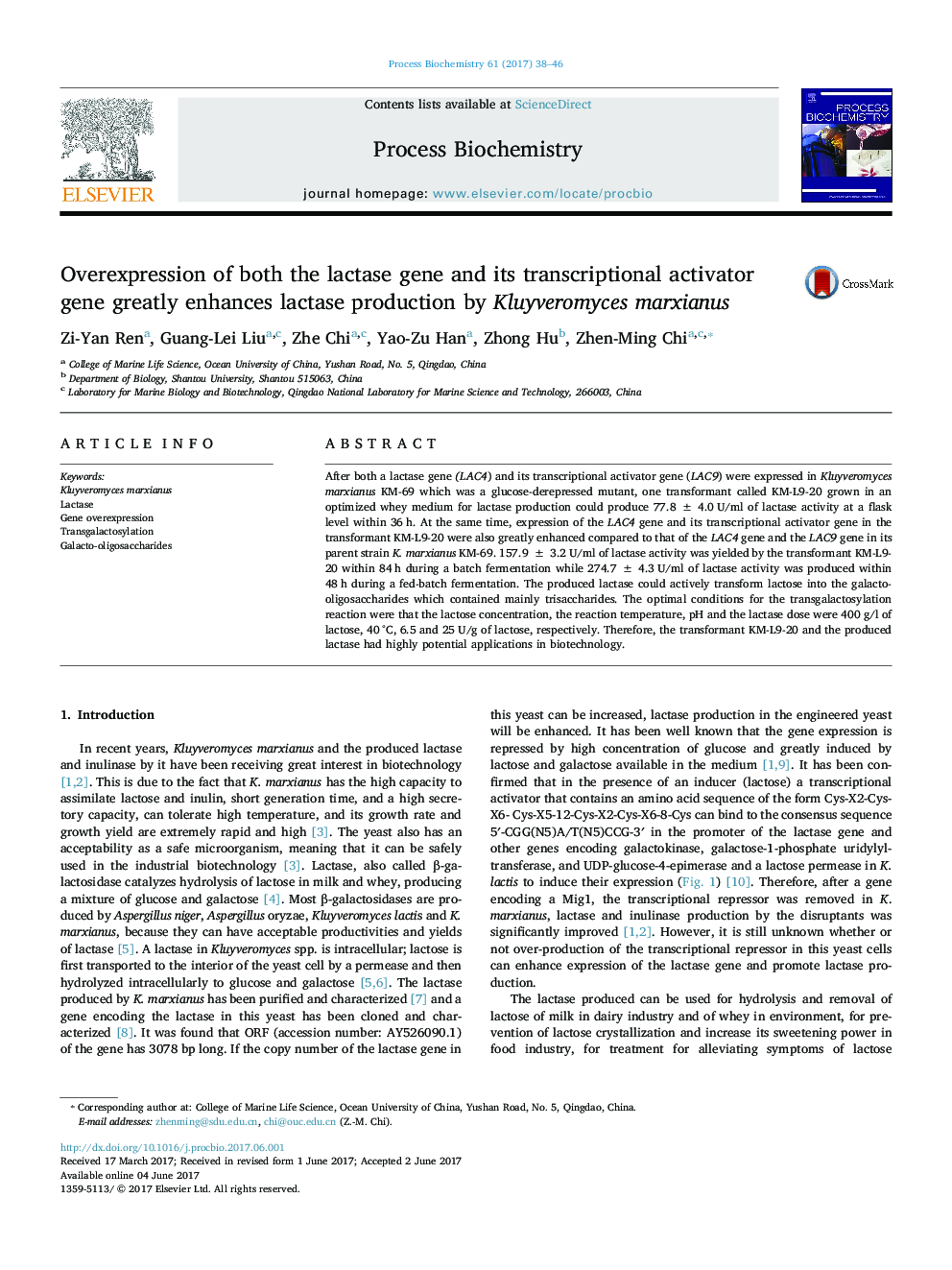| Article ID | Journal | Published Year | Pages | File Type |
|---|---|---|---|---|
| 6452900 | Process Biochemistry | 2017 | 9 Pages |
â¢Both the lactase gene and its transcriptional activator gene were actively expressed.â¢274.7 U/ml of lactase activity was produced during the fed-batch fermentation.â¢The main trisaccharides were produced from lactose by the lactase.â¢The transformant KM-L9-20 and the lactase had highly potential applications in biotechnology.
After both a lactase gene (LAC4) and its transcriptional activator gene (LAC9) were expressed in Kluyveromyces marxianus KM-69 which was a glucose-derepressed mutant, one transformant called KM-L9-20 grown in an optimized whey medium for lactase production could produce 77.8 ± 4.0 U/ml of lactase activity at a flask level within 36 h. At the same time, expression of the LAC4 gene and its transcriptional activator gene in the transformant KM-L9-20 were also greatly enhanced compared to that of the LAC4 gene and the LAC9 gene in its parent strain K. marxianus KM-69. 157.9 ± 3.2 U/ml of lactase activity was yielded by the transformant KM-L9-20 within 84 h during a batch fermentation while 274.7 ± 4.3 U/ml of lactase activity was produced within 48 h during a fed-batch fermentation. The produced lactase could actively transform lactose into the galacto-oligosaccharides which contained mainly trisaccharides. The optimal conditions for the transgalactosylation reaction were that the lactose concentration, the reaction temperature, pH and the lactase dose were 400 g/l of lactose, 40 °C, 6.5 and 25 U/g of lactose, respectively. Therefore, the transformant KM-L9-20 and the produced lactase had highly potential applications in biotechnology.
Graphical abstractThe ribbon representation of the secondary structure of the transcription activator (Lac9) and its conserved amino acids (yellow ones) from K. marxianus KM-0 used in this study.Download high-res image (54KB)Download full-size image
